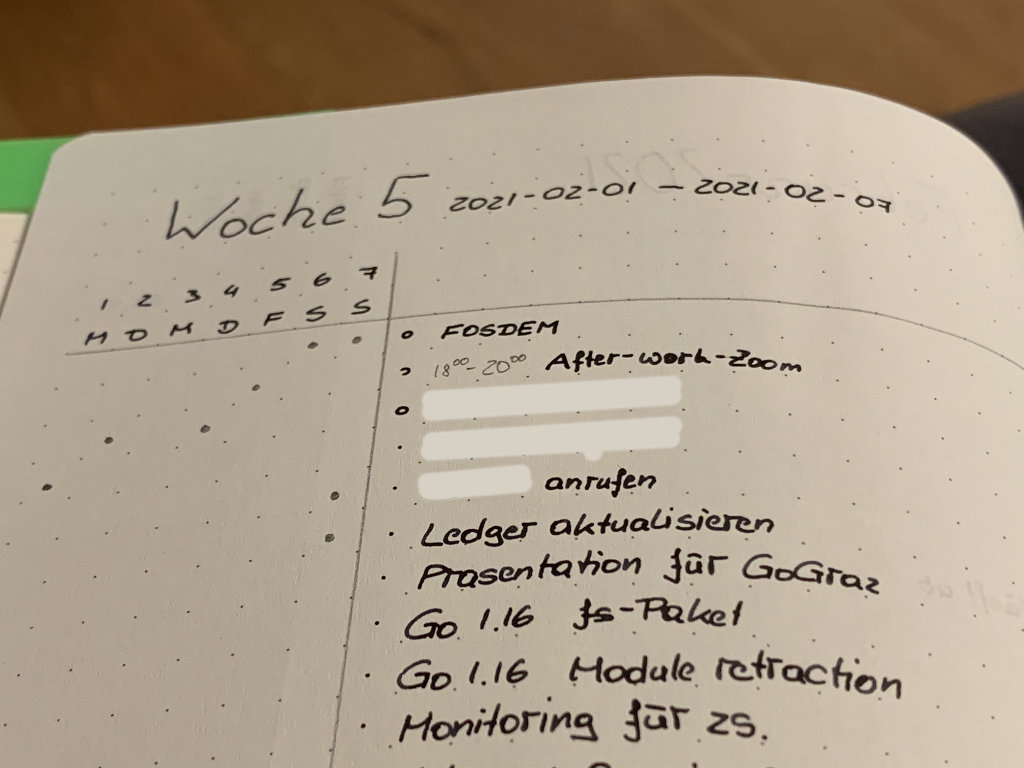A page type that is quite common among Bullet Journals is the weekly spread/weekly page/weekly log. Here, you lay out the week ahead usually in some kind of calendar-like view - with boxes, columns, or something similar. While this offers a nice presentation, it take a bit of time to setup and also might be rather restrictive to the number of items that might fit into a day while leaving lots of white-space on other days.

Over the last couple of weeks I’ve switched from such a a-box-a-day weekly page to one using the so-called “Alastair method”. Here, I just have to create a very simple table with one 8 columns: One column per day (from Monday to Sunday) and then another one for the actual entry.
When the task or entry is limited to only a single day or two, I just add a dot in that entry’s row at the columns for the respective days. If something is just a general item of the week, it gets no dot. I treat these somehow like my goals, stuff that I want to get done that week.
I really like that setup simply because it take the effort out of creating weekly pages. Instead, I can focus on the actual review/planning phase instead of “wasting time” at drawing nice grids. Of course, this method won’t work for everything. The more “facets” you have that an entry could be associated with, the wider the first part of the table becomes and the more space you waste. At this point, I think the sweet spot here is somewhere between 3 and 7 such categorising columns.
In the future, I might also try this for the future log with perhaps just 4-6 months per table.

Do you want to give me feedback about this article in private? Please send it to comments@zerokspot.com.
Alternatively, this website also supports Webmentions. If you write a post on a blog that supports this technique, I should get notified about your link 🙂